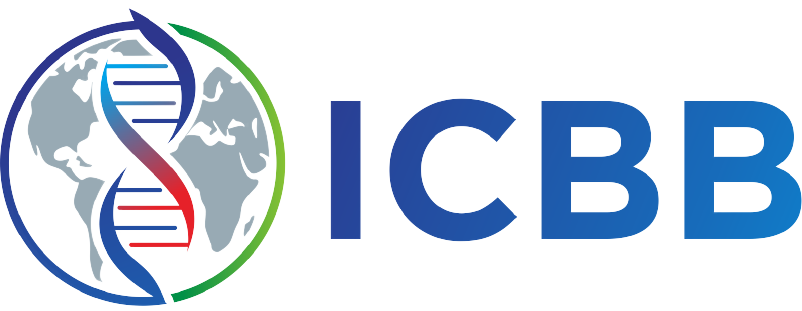Effect of Priming Treatment and Aluminum Stress on Soybean (Glycine max (L.) Merrill) Seeds Viability
Authors
Sahla Sania Hasanatunnisa , Darul ZumaniDOI:
10.29303/jbt.v25i3.9658Published:
2025-08-11Issue:
Vol. 25 No. 3 (2025): Juli-SeptemberKeywords:
Aluminum Stress, Seed Priming, Seedling, Soybean.Articles
Downloads
How to Cite
Downloads
Metrics
Abstract
Soybean (Glycine max (L.) Merrill) is recognized as one of important functional food that contributes significantly to fulfilling the nutritional and dietary needs of the population. However, efforts to increase soybean production are often hindered by problems faced by the plants on suboptimal land, particularly on acidic soils that can induce aluminum stress. Seed priming has been identified as a method to enhance seed quality, as it can improve seed viability and performance under stress conditions. This study aims to determine the interaction effect between priming treatment and aluminum stress on soybean seeds viability. The research was conducted in January 2025 at the Production Laboratory, Faculty of Agriculture, Siliwangi University. This research use a factorial randomized complete block design (RCBD) with three replications. The first factor was seed priming using four different solutions: distilled water, KNO₃, PEG6000, and GA₃. The second factor was aluminum stress using AlCl36H2O consist levels of four concentrations: 0, 121, 242, and 363 ppm. The results showed that interaction effects occurred on germination percentage and vigor index, while no interaction effect on germination speed, radicle length, shoot length, and seedling dry weight. For germination percentage and vigor index parameters, the effects of priming varied depended on the level of aluminum stress. Priming with PEG6000 and GA₃ showed potential in mitigating aluminum stress in soybean and aluminum stress at 242 ppm can still be tolerated by soybean seeds that primed with GA₃.
References
Adhikari, B., P.R. Dhital, S. Ranabhat and H. Poudel. (2022). Effect of seed hydro-priming durations on germination and seedling growth of bitter gourd (Momordica charantia). PLoS ONE, 16(8 August): 1–12.
Agustin, N., A. Agustiansyah, P.B. Timotiwu, & M. Kamal. (2023). Efektivitas priming pada benih jagung dalam memperbaiki perkecambahan pada media masam. Jurnal Agrotropika, 22(2): 138-147.
Amoozadeh, A., S. Rahmani, & F. Nemati. (2013). Poly(ethylene) Glycol/AlCl3 as a new and efficient system for multicomponent biginelli-type synthesis of pyrimidinone derivatives. Heterocyclic Communications, 19(1): 69–73.
Amini, R. (2013). Drought stress tolerance of barley (Hordeum vulgare L.) affected by priming with PEG. International Journal of Farming and Allied Sciences Available, 2(20): 803–808.
Astuti, M., A. Meliala, F.S. Dalais, & M.L. Wahlqvist. (2000). Tempe, a nutritious and healthy food from Indonesia. Asia Pacific J Clin Nutr. 9 (4): 322–325.
Badan Pangan Nasional. (2024). Ketersediaan dan stabilitas kedelai butuh sinergi stakeholder. https://badanpangan.go.id/blog/p ost/kepala-nfa-arief-prasetyo adi-tegaskan-ketersediaan-dan-stabilitas-kedelai-butuh-sinergi-stakeholder
Camara, M. C., L.P.S. Vandenberghe, C. Rodrigues, J. de Oliveira, C. Faulds, E. Bertrand, & C.R. Soccol. (2018). Current advances in gibberellic acid (GA3) production, patented technologies and potential applications. Planta, 248(5): 1049–1062.
Damayanti, F., & E. Gresita. (2019). Screening ketahanan terhadap aluminium pada beberapa varietas selada (Lactuca sativa L.). Jurnal Penelitian Pertanian Terapan. 24(3): 423–433.
Deninta, N., T. M. Onggo, & Kusumiyati. (2017). Pengaruh berbagai konsentrasi dan metode aplikasi hormon GA3 terhadap pertumbuhan dan hasil tanaman brokoli kultivar lucky di lembang. Indonesian Journal of Applied Sciences, 7(2): 5–9.
Draganić, I., & S. Lekić. (2012). Seed priming with antioxidants improves sunflower seed germination and seedling growth under unfavorable germination conditions. Turkish Journal of Agriculture and Forestry, 36(4): 421-428.
David, M. & M Musyimi. (2023). Effect of aluminium stress on germination, growth and photosynthetic pigments of Amaranthus hybridus. Journal of Biodiversity and Biotechnology, 3(1): 44–50.
Farida. (2017). Pengaruh lama perendaman dalam giberelin (GA3) terhadap perkecambahan benih aren (Arenga pinnata merr). Magrobis Journal, 17(1): 47–56.
Fuqara, F.A., & Y. W.Tanjung. 2023. Strategi peningkatan produksi padi lahan suboptimal. Jurnal Sosial Ekonomi Pertanian, 19(2), 129–138.
Gnawali, A.,& R. Subedi. (2021). Gibberellic acid priming enhances maize seed germination under low water potential. Indonesian Journal of Agricultural Science, 22(1): 17–26.
Guangwu, Z., & J. Xuwen. (2014). Roles of gibberellin and Auxin in promoting seed germination and seedling Vigor in Pinus massoniana. Forest Science, 60(2): 367–373.
Gupta, R., & S.K Chakrabarty. (2013). Gibberellic acid in plant. Plant Signaling and behavior. 8(9): e25504.
Iqbal, M., & M. Ashraf. (2013). Gibberellic acid mediated induction of salt tolerance in wheat plants: Growth, ionic partitioning, photosynthesis, yield and hormonal homeostasis. Environmental and Experimental Botany, 86(2013): 76–85.
Jamal, S. N., M.Z. Iqbal, & M. Athar. (2006). Evaluation of two wheat varieties for phytotoxic effect of mercury on seed germination and seedling growth. Agriculturae Conspectus Scientificus, 71(2): 41–44.
Kambhampati, S., J.A. Aznar-Moreno, S.R. Bailey, J.J. Arp, K.L. Chu, K.D. Bilyeu, T.P. Durrett, & D.K. Allen. (2021). Temporal changes in metabolism late in seed development affect biomass composition. Plant Physiology, 186(2): 874–890.
Kementerian Pertanian. (2017). Meraih Untung Dengan Kedelai Unggul. IAARD Press.
Kementrian Pertanian. (2022). Statistik konsumsi pangan tahun 2022. Pusat data an sistem informasi pertanian. Kementrian Republik Indonesia. 1–132.
Kochian, L. V., M. A. Piñeros, J. Liu, & J.V. Magalhaes. (2015). Plant adaptation to acid soils: the molecular basis for crop aluminum resistance. Annual Review of Plant Biology, 66(1): 571–598.
Kochian, L. V., O.A. Hoekenga, & M.A. Piñeros. (2004). How do crop plants tolerate acid soils? Mechanisms of aluminum tolerance and phosphorous efficiency. Annual Review of Plant Biology, 459–493.
Kocjan, A., J. Kwasniewska, & M. Szurman-Zubrzycka. (2024). Understanding plant tolerance to aluminum: exploring mechanisms and perspectives. Plant and Soil, 507(1): 195–219.
Krisnawati, A. (2017). Soybean as source of functional food. Iptek Tanaman Pangan, 12(1): 57–65.
Lei, C., M. Bagavathiannan, H. Wang, S.M. Sharpe, W. Meng, & J. Yu. (2021). Osmopriming with polyethylene glycol (PEG) for abiotic stress tolerance in germinating crop seeds: A review. Agronomy, 11(11), 1–12.
Li, W., S. Ullah, Y. Xu, T. Bai, S. Ye, W. Jiang, & M. Yang. (2022). Effects of elevated aluminum concentration and distribution on root damage, cell wall polysaccharides, and nutrient uptake in different tolerant eucalyptus clones. International Journal of Molecular Sciences, 23(21).
Liu, Y., J. Xu, S. Guo, X. Yuan, S. Zhao, H. Tian, S. Dai, X. Kong, & Z. Ding. (2020). AtHB7/12 regulate root growth in response to aluminum stress. International Journal of Molecular Sciences, 21(11): 1–15.
Long, S., W. Xie, W. Zhao, D. Liu, P. Wang, & L. Zhao. (2024). Effects of acid and aluminum stress on seed germination and physiological characteristics of seedling growth in Sophora davidii. Plant Signaling and Behavior, 19(1): e2328891.
Ma, L., J. Wei, G. Han, X. Sun, & X. Yang. (2024). Seed osmopriming with polyethylene glycol (PEG) enhances seed germination and seedling physiological traits of Coronilla varia L. under water stress. PLoS ONE, 19(5 May): 1–21.
Mansour, M. M., & E.A.R. Kamel. (2005). Interactive effect of heavy metals and gibberellic acid on mitotic activity and some metabolic changes of Vicia faba L. plants. Cytologia, 70(3): 275–282.
Mihoub, A., A. Chaoui, & E. El Ferjani. (2005). Changements biochimiques induits par le cadmium et le cuivre au cours de la germination des graines de petit pois (Pisum sativum L.). Comptes Rendus - Biologies, 328(1): 33–41.
Megawati, S. (2022). Viabilitas dan vigor berbagai varietas true shallot seed dengan perendaman jenis zat pengatur tumbuh (ZPT) alami. Agritech : Jurnal Fakultas Pertanian Universitas Muhammadiyah Purwokerto, 24(2): 131
Mulyani A. & M. Sarwani. (2013). Karakteristik dan potensi lahan sub optimal untuk pengembangan pertanian di indonesia. Jurnal Sumberdaya Lahan. 7(1): 47-55.
Nawaz, J., M. Hussain, M., A, Jabbar, & G.A. Nadeem. (2013). Seed priming a technique. International Journal of Agriculture and Crop Sciences. 6(20): 1373-1381.
Ningsih, O. (2017). Dampak Kenaikan Harga Kedelai Terhadap Industri Tahu dan Tempe di Kota Pekanbaru. Jurnal Online Mahasiswa Fakultas Ekonomi Universitas Riau, 4(1): 994–1003.
Nurida, N. L., A. Dariah, & S. Sutono. (2015). Pembenah Tanah Alternatif untuk Meningkatkan Produktivitas Tanah dan Tanaman Kedelai di Lahan Kering Masam. Jurnal Tanah dan Iklim, 39(2): 99–108.
Sutopo, L. (2010). Teknologi Benih. Raja Gupindo Persada. Jakarta.
Shezi, N., & J.A. Adjetey. (2020). High aluminium concentration and soil acid saturation reduce germination, emergence and seedling establishment of groundnut. Journal of Applied Sciences and Environmental Management, 24(2): 257–262.
Swastika, D. K. S. (2022). Perjalanan panjang Indonesia menuju swasembada kedelai. Forum Penelitian Agro Ekonomi, 40(1): 39–53.
Wahyuni W. & Kartika. (2022). Kajian teknik invigorasi benih kedelai (Glycine max) di Indonesia: review artikel. Fruitset Sains, 10(4): 146–156.
Wang, Y., E. Zhou, M. Yao, D. Xue, N. Zhao, Y. Zhou, B. Li, K. Wang, Y. Miao, C. Gu, X. Wang, & L. Wei. 2023. PEG6000 Priming Improves Aged Soybean Seed Vigor via Carbon Metabolism, ROS Scavenging, Hormone Signaling, and Lignin Synthesis Regulation. Agronomy, 13(12): 1–21.
Zhang, H., Z. Jiang, R. Qin, H. Zhang, J. Zou, W. Jiang, & D. Liu. 2014. Accumulation and cellular toxicity of aluminum in seedling of Pinus massoniana. BMC Plant Biology, 14(1), 1–16.
License
Copyright (c) 2025 Sahla Sania Hasanatunnisa, Darul Zumani

This work is licensed under a Creative Commons Attribution 4.0 International License.

Jurnal Biologi Tropis is licensed under a Creative Commons Attribution 4.0 International License.
The copyright of the received article shall be assigned to the author as the owner of the paper. The intended copyright includes the right to publish the article in various forms (including reprints). The journal maintains the publishing rights to the published articles.
Authors are permitted to disseminate published articles by sharing the link/DOI of the article at the journal. Authors are allowed to use their articles for any legal purposes deemed necessary without written permission from the journal with an acknowledgment of initial publication to this journal.


























